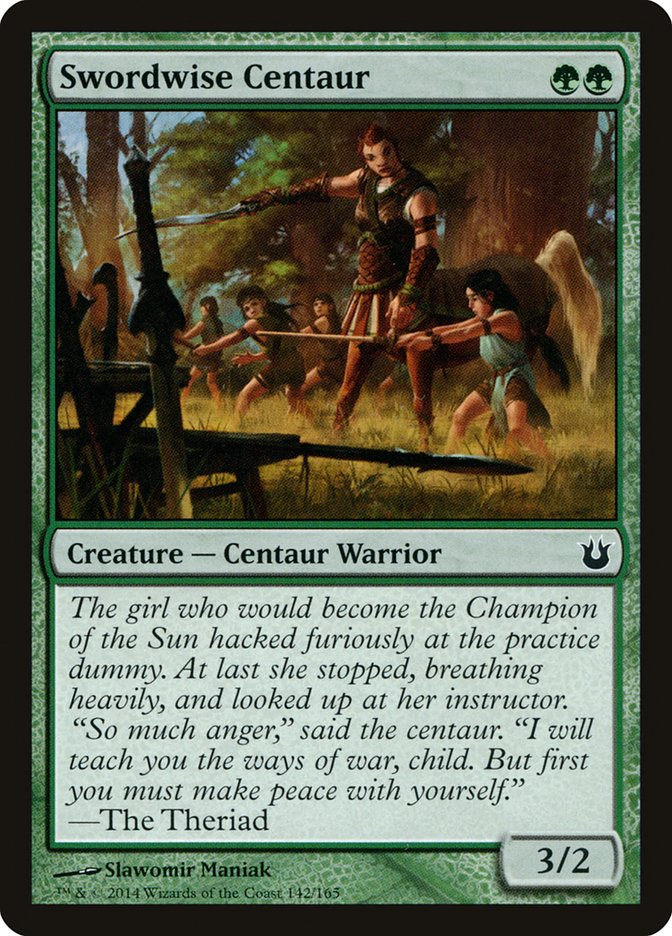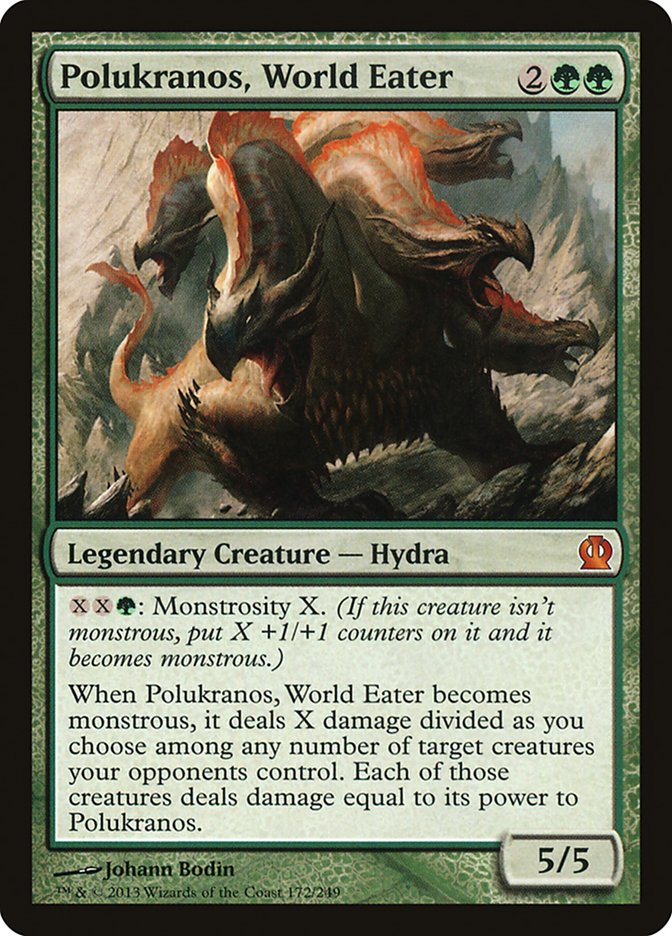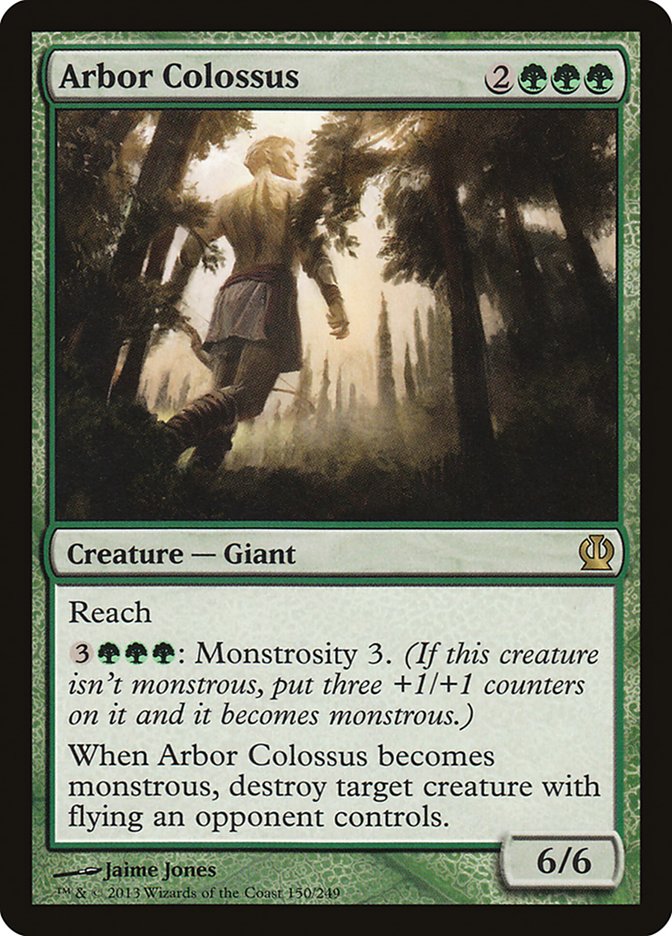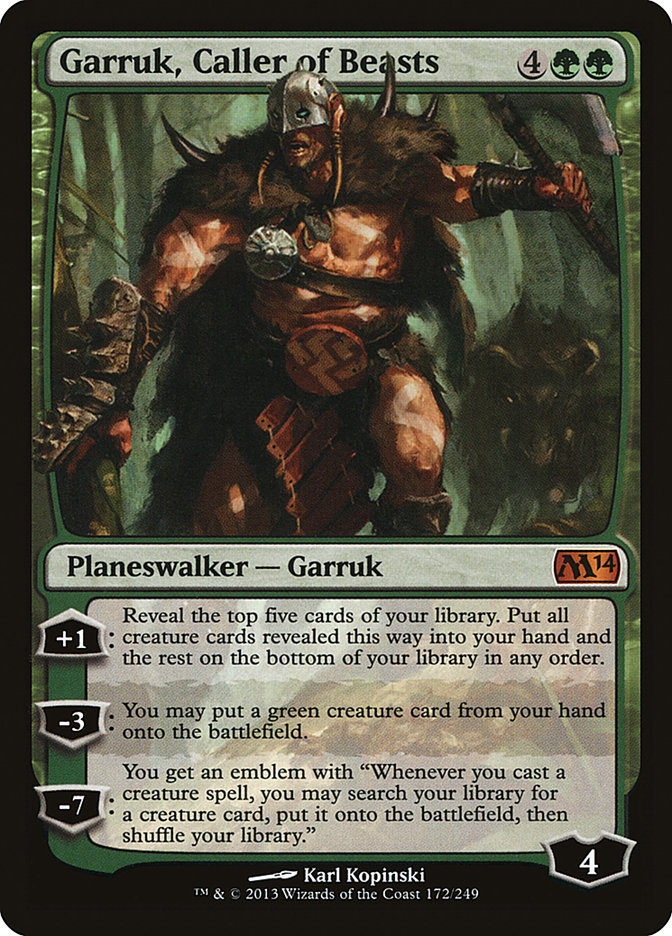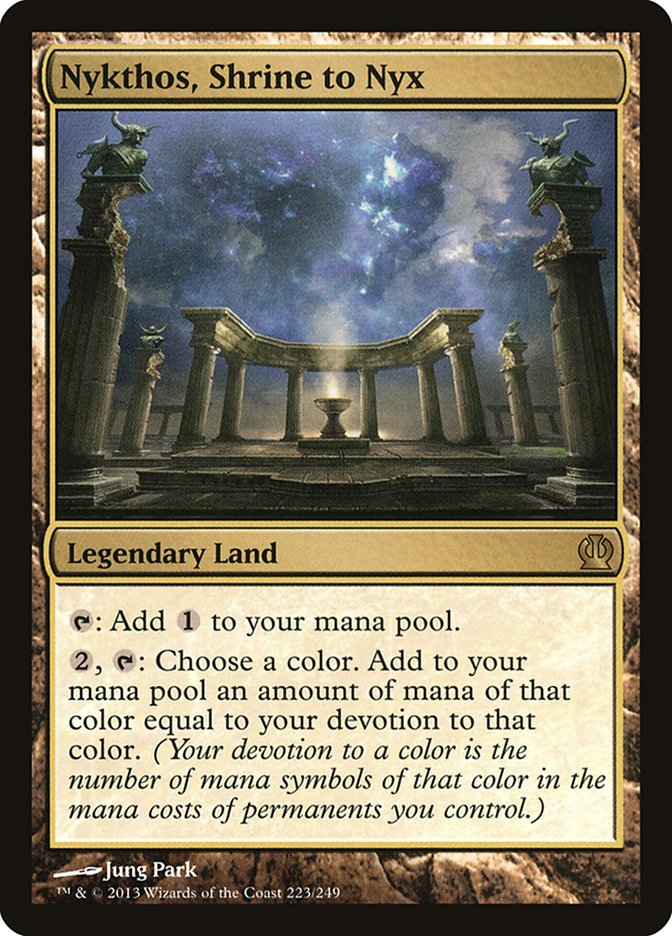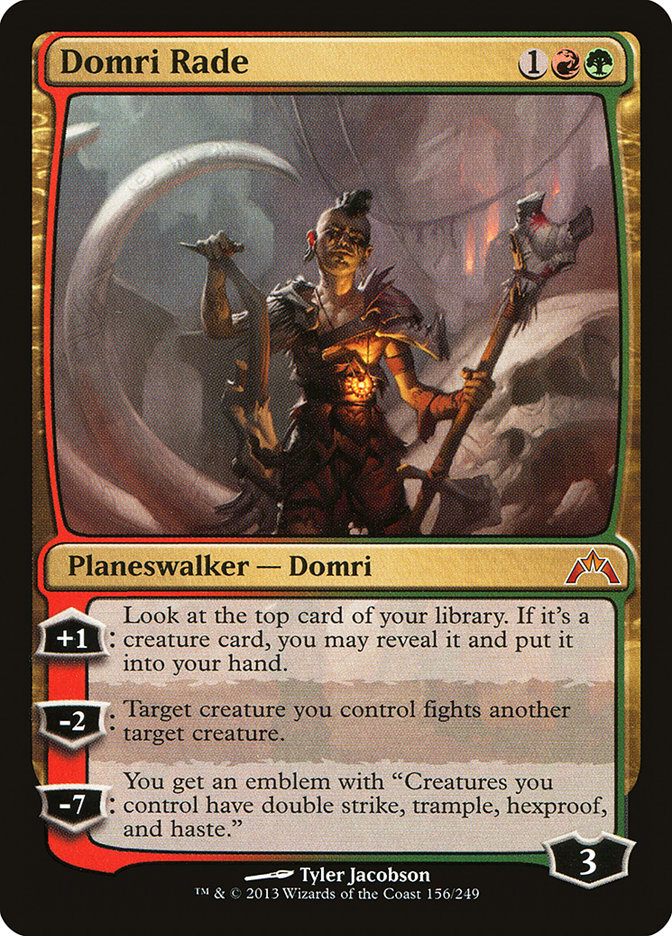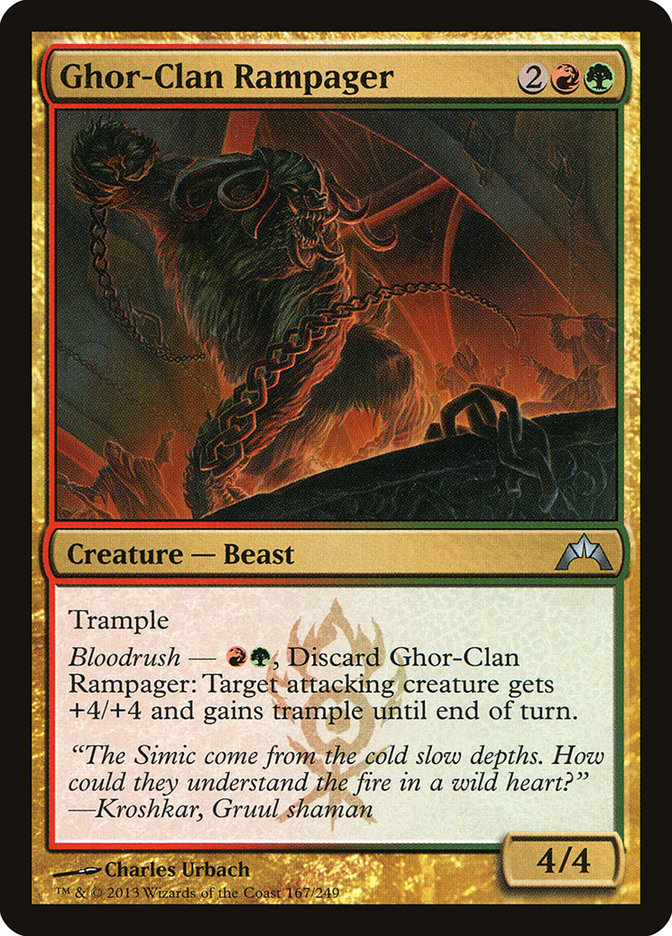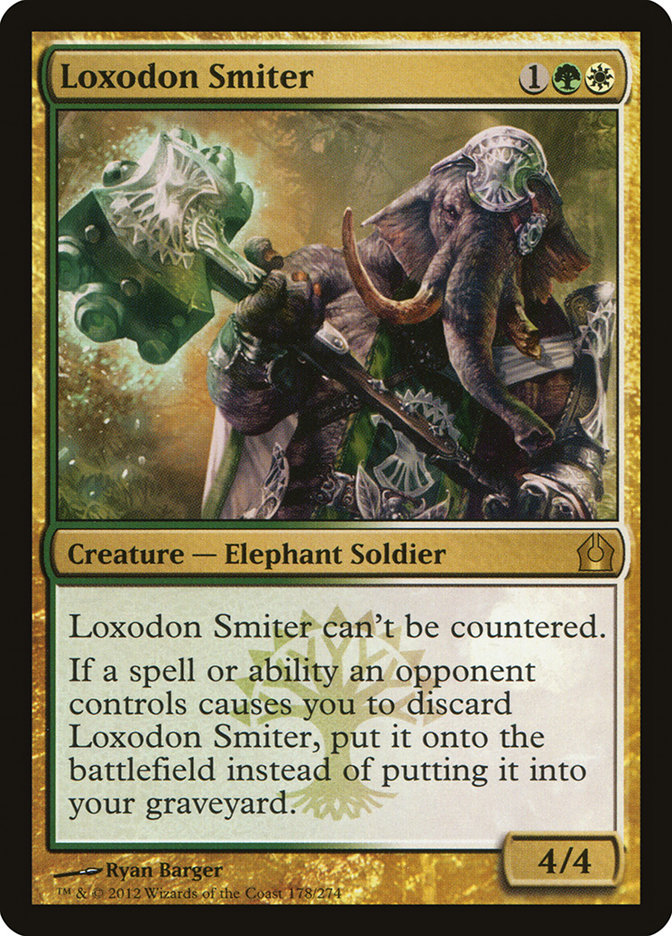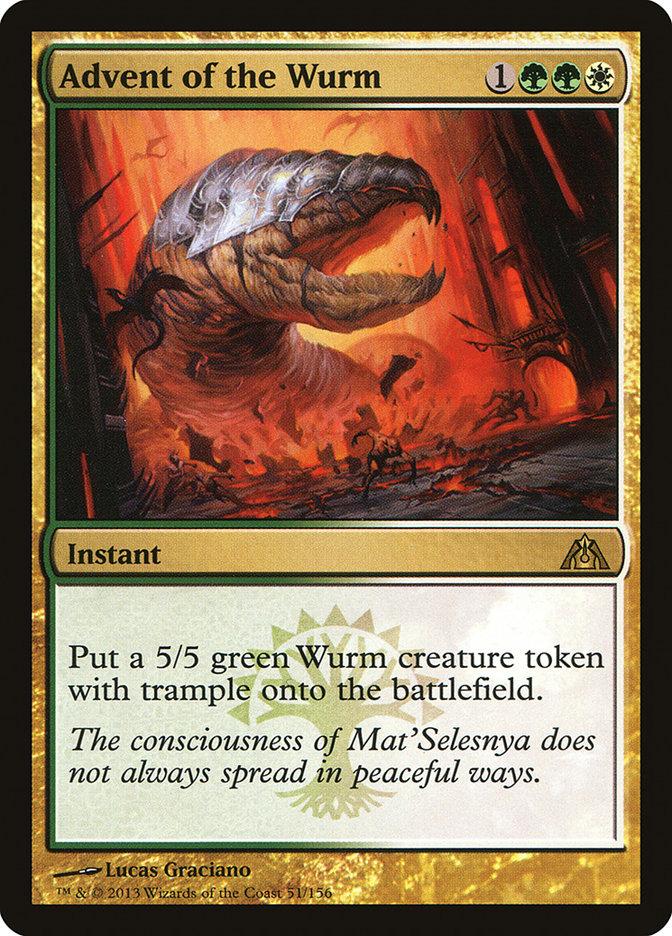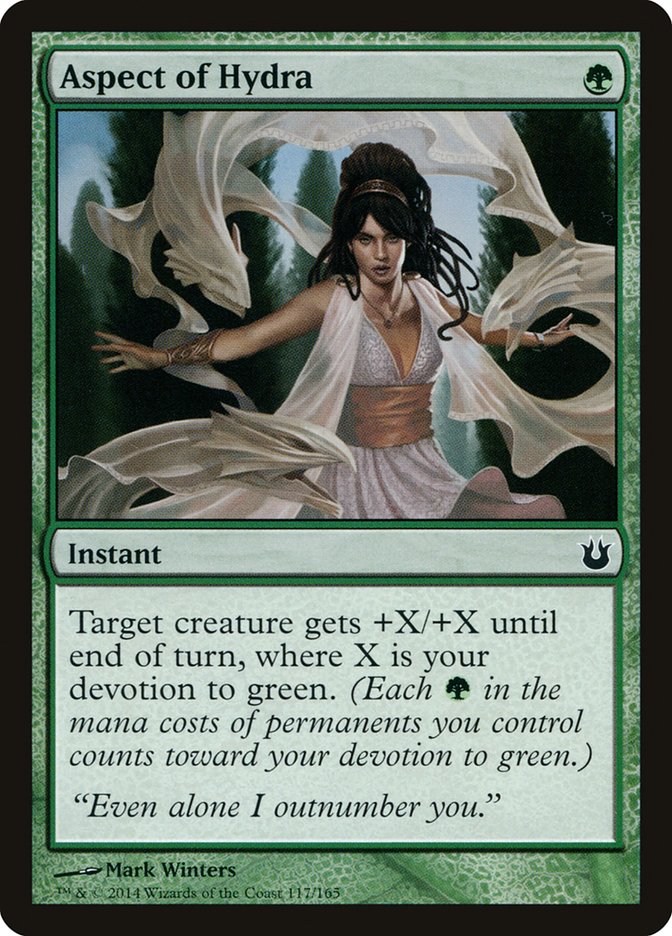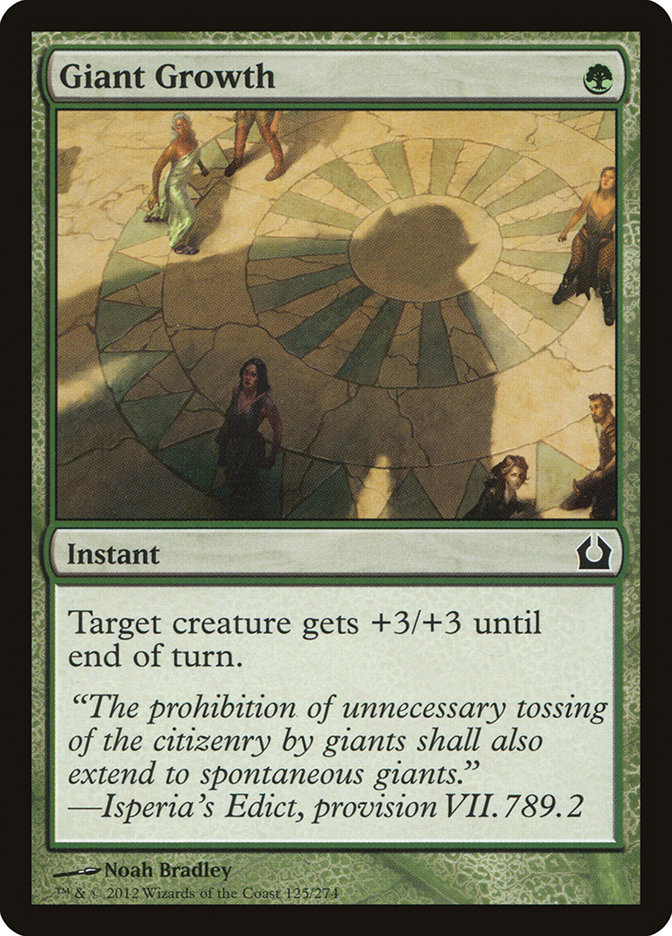Everyone brews for different reasons. For some it’s to showcase clever card interactions, while others are drawn to brewing specifically to avoid piloting decks that are widely played. Some brew to innovate a format, and others brew to create new decks to punish a stale metagame. My motivation for brewing is more single minded—I want to win. I want to crush my U/W Control opponents and see Esper Control players driven mad before me. I want to hear my opponent’s lamentations when their Hero’s Downfall is cast one turn too late.
"Brewing to win" involves studying the format, discovering weakness, and exploiting those weaknesses for match wins. Every deck in every format has a weakness that can be capitalized on. The brewing game is discovering which cards will allow you to attack multiple "stronger" decks at the same time. Searching for cards to attack the top decks means ignoring the nagging voice that tries to categorize cards as specifically "good" and "not good." Almost all cards are great to play in specific situations against specific decks.
It doesn’t matter that you’re playing four copies of Mending Touch and Brushstrider if at the end of the day you’re sitting with a trophy in your hands.
I have been slinging Magic cards since my mom taught me to play when I was five years old. I was taught the basics of how to play before I could actually read the cards I was holding. I have been improving my game ever since. My two brothers and I spent our first seven Magic-playing years building and taking apart decks from the same old shoebox full to the brim with various commons, uncommons, and the occasional rare.
As I grew older, I began learning about the competitive Magic scene and about specific professional Magic players. I had a mild interest in playing competitively but was of the opinion that I was nowhere near good enough to play in large tournaments like Grand Prix and Pro Tour Qualifiers. I felt that if I wasn’t even in the Top 5 at FNM, I definitely wasn’t going to stand a chance against some of the best players in the world, but I got over that fear by realizing that there is always going to be a bigger fish. There is always going to be someone who is better than you, and there is only one way to have a chance of actually beating those "better players": playing against them.
I have been playing Magic competitively for about two years. Coincidentally, it all started in Wisconsin at the SCG Standard Open in Madison in 2012. Late on a Friday night, some teammates from the Dilu Cavalry convinced me to travel with them to Madison for a Standard tournament. They had a new G/R deck that attacked the format in an interesting way, and I liked the look of it.
After testing the deck for several hours and sleeping for a couple more, I piloted it through a field of better opponents and impossible matchups and made it to the Top 8. That late Friday night decision led to my first ever Open trophy, kindled a longstanding love of green-based aggro decks, and more importantly introduced me to some of the best friends I would ever have. That win also gave me the confidence and drive to pursue Magic competitively.
That tournament forged many of the opinions I have about tournament Magic. My team was playing a G/R Huntmaster of the Fells deck in a world full of Delver of Secrets. We were not playing the best deck; we were playing to beat the best deck.
The decision to build Mono-Green Aggro was about as last minute as the decision to actually go to the Standard Open in Milwaukee this past weekend. When I finally decided that I was going, I needed a deck. As has become tradition at this point, I stayed up late on Friday brewing, tweaking, and tuning a deck that would stride me through the brush and into the Top 8.
All I knew on Friday night was that I wanted to attack the format from a new angle, but I had no idea what exactly I was going to do. While sitting in my room, an idea hit me like a Skullcrack! The week prior I had played against a Mono-Green Aggro deck that had some great building blocks but was unrefined. I had also read an article over on the Premium side of this website that led me to believe Mono-Blue Devotion might be a less popular choice for the weekend. These factors combined with some last-minute theorycrafting manifested in the idea that the right combination of little green men and very tricky spells could be my golden ticket this weekend.
With almost no testing and only one conversation with my roommate, a fellow Reverent Hunter enthusiast, and only a few hours of sleep, I finally registered this 75:
Creatures (34)
- 2 Scavenging Ooze
- 4 Brushstrider
- 4 Burning-Tree Emissary
- 4 Experiment One
- 3 Slaughterhorn
- 4 Elvish Mystic
- 4 Kalonian Tusker
- 4 Reverent Hunter
- 1 Nylea, God of the Hunt
- 4 Boon Satyr
Lands (23)
Spells (3)
Sideboard

The general reason I decided on this deck boils down to this—we are living in a format ruled by removal and mediocre creatures. You might think that a format full of removal would be a harsh environment in which to play a deck with 34 creatures, but it’s exactly the type of deck you want. I’ll explain why. The removal in this format is slow (Hero’s Downfall, Supreme Verdict, Detention Sphere), which means that all you need to do is play more creatures faster than your opponent can play removal.
Mono-Black Devotion, Esper Control, and U/W Control are decks that can only play one removal spell per turn until the midgame. If you can just choke your opponent’s mana by dumping two to five creatures out by turn 2 and make sure that their expensive removal spells are too slow to stop your march toward victory, they have no way of interacting with you in a meaningful way.
Once you start thinking about the format in this way, then the card decisions almost make themselves.
- You want one-mana creatures so you can get ahead of their removal.
- You want threats like Mutavault that can’t be touched by sorcery speed removal.
- You want power-positive creatures on two or three mana so that they have to point their removal at your more expensive cards as the game progresses, which protects your Mutavaults and cheaper guys.
Enter Burning-Tree Emissary. This card is the very definition of the term "overcommitting" and is the single best card in the format at getting ahead of removal. Your opponent can have as many expensive removal spells as they want, but if you have a pile of creatures in play, they be dead long before getting a chance to play more than one or two of them. They start off behind on tempo and stay that way.
"But Mason, you handsome devil, how can this deck ever beat a Supreme Verdict? That card is the very definition of catching up!"
Have you met my friend Experiment One? How about his friends Mutavault and Boon Satyr? Burning-Tree Emissary and Brushstrider together force control players to fire off Supreme Verdict, which leaves our Experiment Ones and Mutavaults alive to continue the onslaught. Mending Touch is another card that can trump their best card against me.
Here’s a sentence you will likely never hear again—Mending Touch is one of the best cards in my deck.
The deck tech I did with Nick Miller will explain some of the more off-the-wall cards in the list, but I’d like to take a moment to discuss some of the more notable omissions from it.
Yep, another Draft common. This is the most asked about green creature not in my deck. Many are quick to point out how much "better" this card is than Brushstrider. What puts Brushstrider strides ahead is the fact that it can be cast using mana from Burning-Tree Emissary. The fact that I already have Kalonian Tusker and need more two-drops that can be played off of Burning-Tree Emissary means this Centaur doesn’t make the cut.
Quick! What’s the best card in G/R Monsters against Esper Control? How about Mono-Black Devotion? Maybe R/W Burn? Unfortunately Papa Kranos underperforms in all of those matchups, and since those are three main decks we’re trying to beat, that makes him aca-awkward. There are better options, like Mistcutter Hydra and Skylasher out of the sideboard, if we’re really so hellbent on taking down Mono-Blue Devotion.
I know with all the green symbols this might look like a devotion deck, but it’s not. We are a lean mean aggro/tempo machine, and we want to keep our curve as low as possible to reduce our land count, which leads to fewer dead draws at various stages of the game despite losing out on the opportunity to play more "powerful" cards.
Why aren’t we playing another color? The short answer is we don’t want to be playing lands that come into play tapped and don’t want to be stuck with spells we can’t cast. If our deck already does everything we need it to, why bother creating inconsistency for the chance to do something better?
These two cards were in consideration for a while, but a better card would be a pump spell that has the option of being a creature. This is where Slaughterhorn shines. It does everything we want it to do—it acts as burn when we need it to, saves our creatures from trades, and can be cast as an aggressive creature that might evolve our Experiment One.
Those are the cards I wouldn’t add to the deck. But what would I remove from the deck if I could redo #SCGMKE?
Moving forward, I would make the following changes.
-1 Forest
-1 Nylea, God of the Hunt
Nylea was absolutely the biggest underperformer in the maindeck. If nothing in the deck costs more than three mana, I think we’re safe cutting down to 22 lands with our playset of Mutavault considering we also have four copies of Elvish Mystic to help us out. The deck makes good use of its mana but doesn’t need a lot to operate. I missed my second land drop for three turns in round 2 against B/W Midrange and still handily won by virtue of playing an Elvish Mystic on turn 1 and then a creature every turn after that.
+1 Slaughterhorn
+1 Mending Touch
Slaughterhorn was an overperformer all day. It helps you punch through annoying blockers like Polukranos, World Eater; Courser of Kruphix; and Frostburn Weird while also being a threat that can easily be played on turn 2 or 3. As for Mending Touch, it’s an awesome trick that is incredibly difficult for most decks to play around, and it’s so important to our plan against Supreme Verdict that I think we need the third copy in the main.
-1 Bramblecrush
This was by far the most disappointing card that I really wanted to play with but turned out was very bad. It’s a great feeling when you destroy a land with a Chained to the Rocks on it, but in reality you’re just paying four mana to get a two-mana creature back. Mono-Black Devotion sideboards out their Underworld Connections and usually doesn’t board their Staff of the Death Magus in, so we don’t have any targets from them post-board.
This guy was a stone-cold stunner during sideboarding, and I want to find room for it in the maindeck. If it can be moved to the main, then I can also fit Skylasher in the sideboard. I haven’t quite figured out how to configure the deck to make the numbers work just yet.
Milwaukee was an amazing experience all around, but I can’t help but think of the very last thing that happened before I left the convention center. A friend of mine asked to see the list since he hadn’t gotten a chance to see the deck in action. He glanced over it and said, "Dude, this deck is stone unplayable. I have no idea how you won any matches with it, let alone got to the Top 8. You can’t beat a Supreme Verdict or Lifebane Zombie. And who even owns these cards?"
Thinking back on the day, everyone I talked to had a similar reaction. These opinions made me question the longevity of this deck. It was a deck created to take down this one tournament and might not be able to perform in future events. But then again, if the majority of tournament players take this dismissive line of thought, then they definitely won’t be taking this deck as seriously as they should. That leaves this deck in the exact same position it was in last week, ready to attack an unprepared format.
And that sounds like a great reason to sleeve up Mono-Green Aggro for another week!

